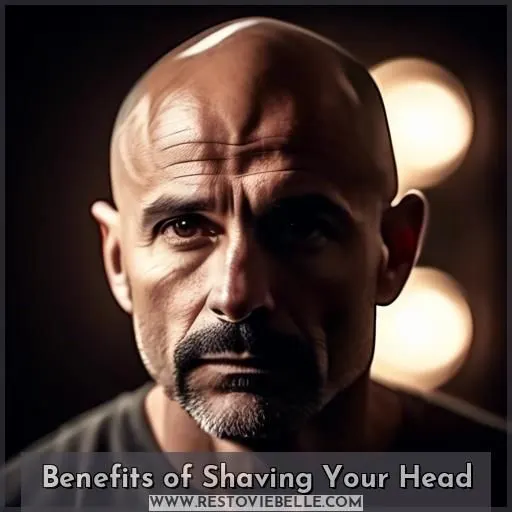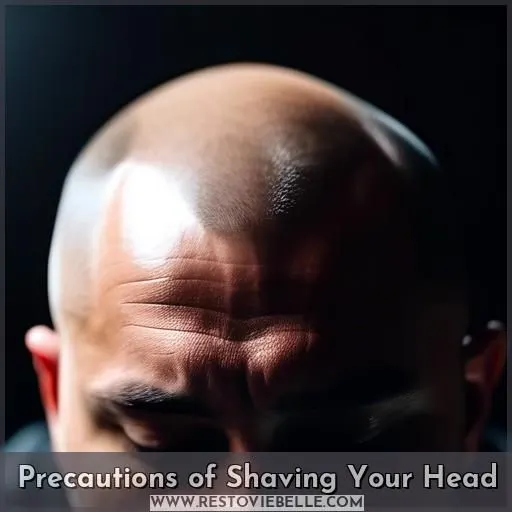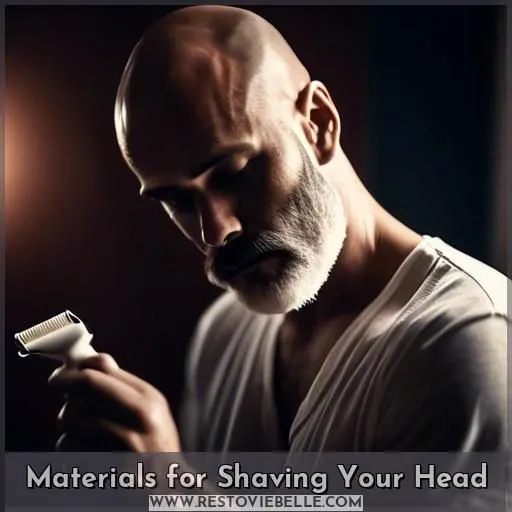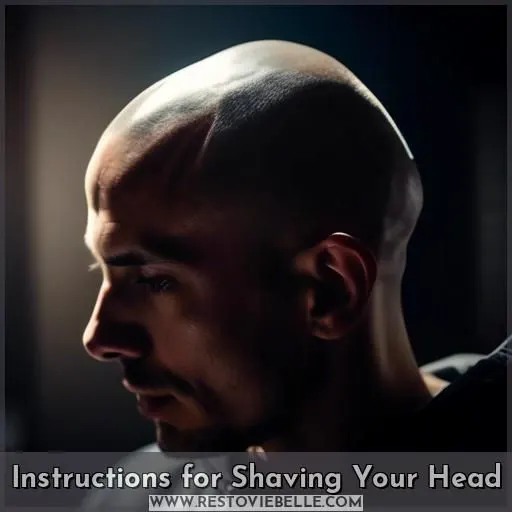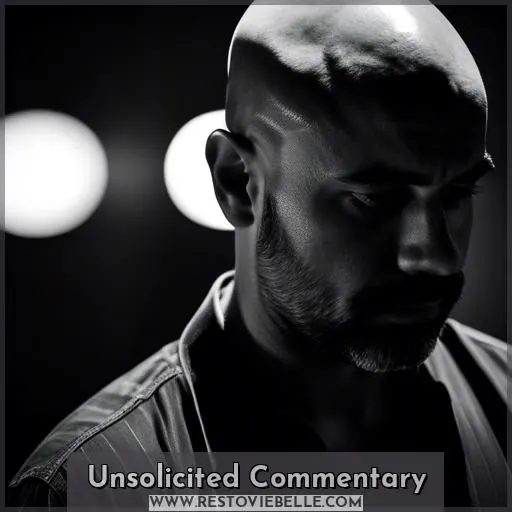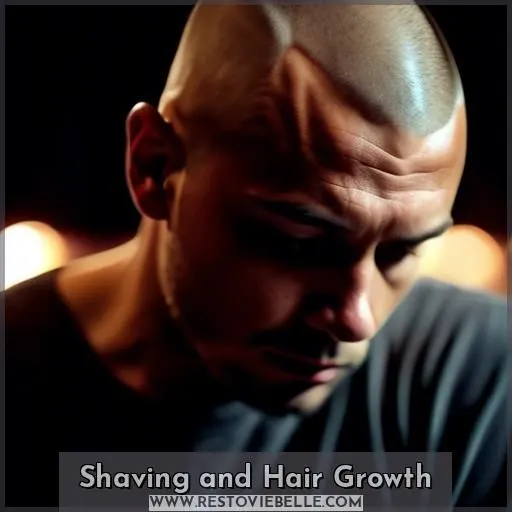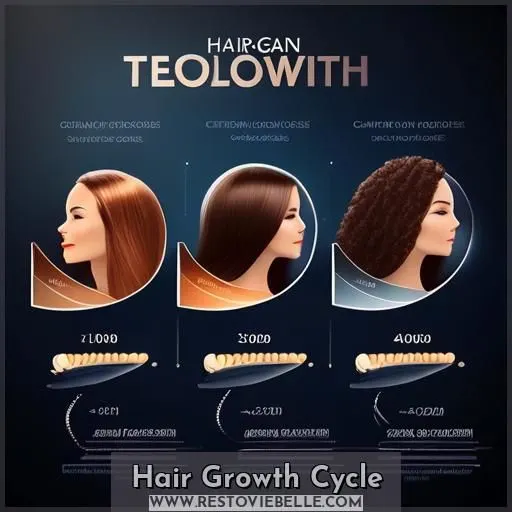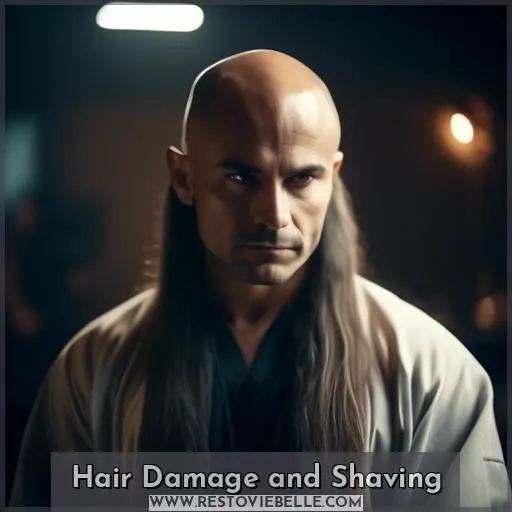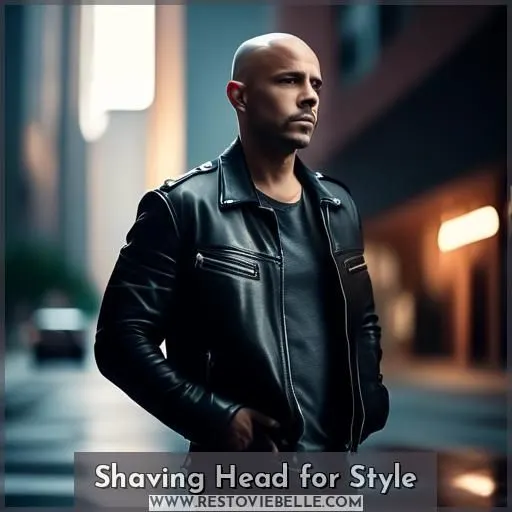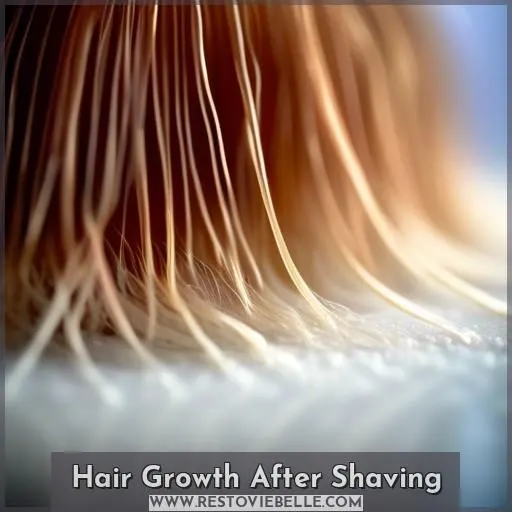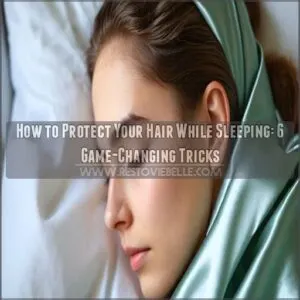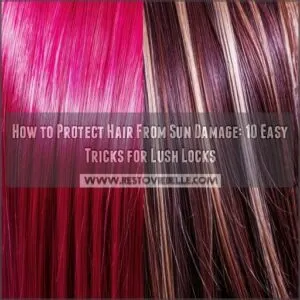This site is supported by our readers. We may earn a commission, at no cost to you, if you purchase through links.
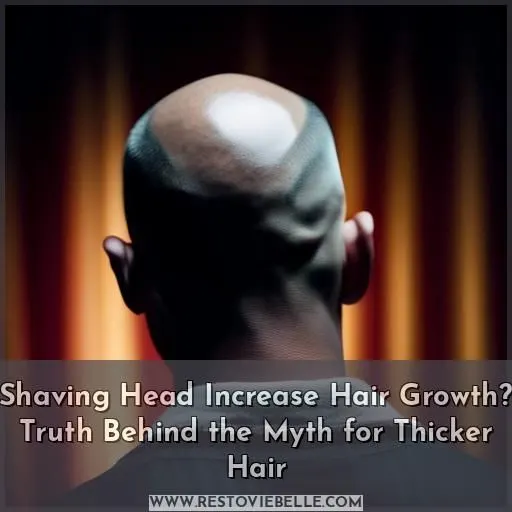
No, shaving your head does not increase hair growth or make hair grow thicker. This myth lacks scientific evidence and is unfounded.
Hair growth occurs from follicles in the scalp. Shaving only removes hair at the skin’s surface without altering the follicles.
While shaving exfoliates dead skin cells and stimulates blood flow, it does not promote faster growth or affect hair thickness.
However, shaving can embrace baldness, highlight facial features, and simplify your grooming routine.
To truly understand this topic, you’ll need to explore further into the hair growth cycle and its intricacies.
Table Of Contents
- Key Takeaways
- Does Shaving Head Increase Hair Growth?
- Benefits of Shaving Your Head
- Precautions of Shaving Your Head
- Materials for Shaving Your Head
- Instructions for Shaving Your Head
- Unsolicited Commentary
- Shaving and Hair Growth
- Hair Growth Cycle
- Hair Damage and Shaving
- Shaving Head for Style
- Hair Growth After Shaving
- Conclusion
Key Takeaways
- Shaving your head does not increase hair growth or make hair grow thicker.
- Shaving can enhance appearance, boost confidence, simplify grooming, and promote healthier hair growth.
- Precautions include moisturizing dry skin, avoiding scalp irritation, preventing ingrown hairs, and protecting exposed skin.
- Shaving your head is a personal choice that can change perceptions, but it doesn’t improve hair health or make hair grow back stronger.
Does Shaving Head Increase Hair Growth?
No, shaving your head doesn’t increase hair growth; it’s a myth that shaving affects hair thickness, color, or growth rate.
Benefits of Shaving Your Head
Shaving your head can bring numerous benefits.
It can enhance your appearance and boost confidence.
It can simplify your hair care routine and save time and money.
Embracing baldness can be a powerful statement.
Shaving your head can even make you more attractive by highlighting your facial features and encouraging a healthy, athletic look.
Additionally, shaving can promote healthier hair growth.
It can stimulate blood flow to the scalp and exfoliate dead skin cells.
Precautions of Shaving Your Head
Shaving your head can be a liberating experience, but it’s crucial to take the necessary steps to prevent potential problems. Here are precautions to keep in mind before shaving your head:
- Dry skin: Use a moisturizer to keep your scalp hydrated, especially after shaving. Dry skin can lead to irritation and discomfort.
- Scalp irritation: Be cautious not to nick or cut your scalp while shaving. Razor burn can also occur, so use a gentle shaving cream or gel and avoid using a dull razor.
- Ingrown hair: Electric razors may help prevent ingrown hairs, which can cause small, itchy or painful bumps on your scalp.
- Exposed skin: Wear sunscreen and cover your head in cold or wet weather to shield your scalp from the elements.
- Upkeep: Daily shaving may be necessary to maintain a smooth head, but be sure to take breaks to allow your scalp to rest and heal if needed.
Materials for Shaving Your Head
Shaving your head can be a liberating experience, offering a new look, time savings, and a confidence boost.
To guarantee a successful shave, you’ll need the right materials.
Start with adequate lighting and a hand mirror.
Use scissors or clippers to trim long hair.
Then apply shaving cream or a warm compress.
Choose a sharp razor and gentle strokes, rinsing the blade after each pass.
After shaving, rinse your scalp with cool water.
Pat dry, and apply moisturizer or aftershave lotion.
Don’t forget safety precautions like using a new blade, moisturizing dry skin, and wearing sunscreen for exposed skin.
Instructions for Shaving Your Head
Shaving your head can be a freeing experience, but it’s essential to follow the correct instructions to guarantee a smooth and healthy process.
First, gather your shaving tools**: a sharp razor, shaving cream or gel, and a soft towel.
Before you start, trim any long hair to make shaving easier.
Wash your scalp with warm water to soften the hair.
Apply shaving cream or use a warm compress.
Use gentle strokes with your razor, rinsing the blade after each one.
Shave the top, sides, and back, checking for missed spots.
After shaving, rinse your scalp with cool water and pat dry with a soft towel.
Don’t forget to moisturize to soothe your skin.
Unsolicited Commentary
Shaving your head can be a liberating experience, but it also comes with its own set of challenges. Balding perceptions have changed over time, and while some may view a bald head as a sign of dominance, others may still perceive it as less attractive, especially for women. Women may face more scrutiny for shaving their heads, as societal norms often dictate that long hair is a feminine trait.
However, baldness isn’t a sign of a problem unless there’s no evidence of hair formation after the age of one or two. Shaving your head is a personal choice that can enhance your confidence and change perceptions, but it doesn’t improve hair health or make hair grow back stronger.
To maintain a shaved head, you’ll need to moisturize daily to prevent dryness and irritation, which can lead to flaking and itching. This is especially important for individuals with sensitive skin, as it can help keep your scalp supple and protected. Moisturizing also lowers the risk of razor bumps and razor burns.
Shaving and Hair Growth
Shaving your head doesn’t affect hair growth, as hair sprouts from the scalp’s follicles, not the surface of the skin. Shaving only removes the hair growing on the skin’s surface and doesn’t alter the hair follicles or affect the hair’s texture, color, or growth rate. Additionally, shaving doesn’t promote hair growth or make hair grow back thicker or faster.
Hair Growth Cycle
Shaving your head can have several advantages, but it’s crucial to comprehend the hair growth cycle to avoid misunderstandings. Here are three key ideas to keep in mind:
- Hair Development from Inside: Hair originates from the root, not the scalp’s surface. Shaving has no effect on the growth cycle, but genetics, hormones, and overall health play a significant role in hair growth.
- Ingrown Hairs: Shaving can result in ingrown hairs, especially with dry skin. Using moisturizer and electric razors can help prevent this.
- Seasonal Variations: Hair growth may be affected by seasonal variations, such as cooler summers, which can alter the appearance of your hair.
Grasping these facets of hair growth can assist you in making informed choices about shaving and hair care.
Hair Damage and Shaving
Shaving your head can be an effective way to maintain a clean and smooth appearance, but it comes with its own set of challenges, such as razor burn, ingrown hairs, dry skin, and scalp irritation. To minimize these issues, it’s crucial to follow proper shaving techniques and use the right aftercare products. Here are some tips to help you avoid skin irritation and maintain a healthy scalp:
- Exfoliate: Before shaving, gently exfoliate your scalp to remove dead skin cells that can clog hair follicles and cause ingrown hairs.
- Moisturize: Use a moisturizer or aftershave lotion after shaving to alleviate the skin and prevent dryness. This can help reduce the risk of razor burn and irritation.
- Avoid hot water: Rinse your scalp with cool water after shaving, as hot water can strip the skin of its natural oils and increase the risk of dryness and irritation.
- Use a sharp razor: Make sure your razor is sharp and clean before shaving. A dull blade can cause more irritation and increase the risk of razor burn.
- Shave in the direction of hair growth: Shaving against the grain can cause more friction and irritation, so it’s best to shave in the same direction as your hair grows.
- Rinse the blade: Rinse the blade after each stroke to prevent the buildup of dead skin cells and hair, which can cause irritation and razor burn.
- Avoid excessive shaving: Shaving too often can irritate the skin and increase the risk of razor burn and ingrown hairs.
- Wear sunscreen: If you’re shaving your head, make sure to wear sunscreen to safeguard your scalp from the sun’s harmful rays.
Shaving Head for Style
Shaving your head isn’t just a bold statement but also a personal choice for aesthetic reasons. It can be a form of self-expression and experimentation with styles. Here are three reasons why shaving your head can be a game-changer:
- Embrace authenticity: Shaving your head allows you to showcase your true identity and exude an air of authenticity that’s inherently attractive.
- Low-maintenance lifestyle: Say goodbye to bad hair days and hours spent in front of the mirror. A shaved head requires minimal upkeep, saving you valuable time and energy.
- Versatile and timeless style: A shaved head complements any ensemble, whether you’re dressed up for a formal event or going for a casual outing. It provides a blank canvas for showcasing your facial features and accessories, allowing you to express your personal style with confidence.
Shaving your head isn’t just about aesthetics but also about embracing one’s true self and defying conventional beauty standards. It’s a decision that can empower and transform your appearance, giving you a sense of confidence and self-assurance that transcends societal norms.
Hair Growth After Shaving
After shaving your head, you may be curious about what to anticipate regarding hair growth.
The encouraging news is that your hair will regenerate similarly to before.
But it’s crucial to care for your scalp and hair to ensure healthy growth.
Post-shave care, such as moisturizing and avoiding abrasive chemicals, can support scalp health.
Aesthetic decisions like shaving your head are personal and can be influenced by seasonal factors.
Bear in mind, shaving doesn’t impact the hair growth cycle or the quality of your hair.
So focus on overall scalp health and hair care for optimal results.
Conclusion
Beginning the process of shaving your head is like revealing a new canvas, ready for discovery.
While the misconception that shaving head increases hair growth lacks basis, this action embraces simplicity and accentuates your distinctive features.
Accept the reality: shaving only trims visible hair, leaving follicles unaffected.
By comprehending the complexities of the hair growth cycle, you can make well-informed choices, adopting your desired style without false hopes.
